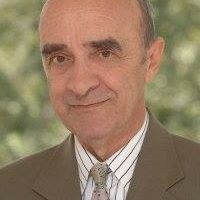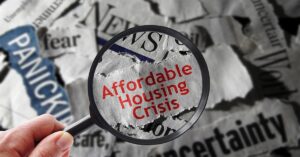Interest rates have been so low for so many years that, until recently, fixed-rate mortgages were chosen by almost all homebuyers. With home prices still increasing and mortgage rates up almost 1 percentage point in the past year, buyers need more attractive 5/1 and 7/1 hybrid adjustable-rate mortgages (ARMs).
In deciding whether to choose between a hybrid ARM or a fixed-rate rate loan, a borrower essentially has two considerations. First, am I going to keep this loan after the rate adjusts and, second, is the reward of having a lower rate and payment for five or seven years — a 5/1 ARM is fixed for five years and adjusts annually after that, for example — worth the risk of payments increasing once the rate starts adjusting.
If the borrower believes that there is a substantial probability that they will sell the home before or soon after the rate begins to adjust, then a hybrid ARM is a risk-free choice. People are likely to sell consequent to a change in employment forcing relocation or if their family size changes.
Recently, the rate difference between a 30-year fixed-rate mortgage and a 5/1 jumbo ARM has been about 0.75 percentage points. If a 5/1 ARM were 1.25 percentage points in rate lower than 30-year fixed-rate mortgage, it would be attractive to more borrowers. A $750,000 mortgage at a fixed rate of 5 percent for 30 year entails a monthly payment of $4,026. A $750,000 5/1 ARM at a 3.75 percent rate requires a monthly payment of $3,473. The savings in payments on the lower-interest ARM versus the fixed-rate mortgage over five years, then, would be $33,180.
For many, the reward of a lower interest and payment over the first five years of the loan is worth the risk of having a higher rate once the loan starts adjusting. Hybrid ARMs can be attractive, if the rate is sufficiently lower than the rate on a 30-year fixed-rate mortgage.
At present, however, hybrid ARMs now available in the market are not priced attractively enough to ensure borrowers judge that they are getting a benefit sufficient to offset the rate and payment risk an ARM entails. Conforming hybrid ARMs almost all come with either unattractive rates or so many points upfront as to make these unappealing, compared to 30-year fixed-rate products. Current rates on jumbo hybrids are about 0.5 percentage points (50 basis points) too high to make them attractive to most borrowers.
Rate dynamics
The standard answer as to why hybrid ARM rates are so high at present is that the Treasury yield curve is nearly flat. The yield curve is a graph having bond duration on the x-axis and yield on the y-axis. A normal, or positive, yield curve has an upward slope, meaning that yields are higher when the term is longer.
Fixed-income securities with longer yields almost always have higher annual rates than those with shorter duration. This gives a better return in exchange for the increase in risk associated with the uncertainties that occur with time.
Generally, yields for Treasury debt instruments with longer durations (10- and 30-year bonds) move with inflation, or the perception of inflation, given investors want higher yields to offset inflation. Yields for shorter-term Treasury debt, especially debt with duration up to one year however, are highly influenced by the federal funds target rate.
With inflation contained, the right side of the yield curve (representing long-term debt) has not moved much while the left side (representing short-term debt) has moved up considerably, resulting in a flattening out of the yield curve. While this flattening yield curve is the excuse for why rates on hybrid ARMs are so unattractive now, in comparison to longer-term mortgages, this is not entirely justified.
Cost of Funds
Despite rising short-term rates, banks are still in a position to offer more attractive rates on hybrid ARMs than they currently offer. If banks are making and holding these loans, their rate risk is minimal because their cost of funds is not increasing in lock step with the federal funds rate — which is the interest rate banks and other depository institutions charge when lending money to other depository institutions on an overnight basis.
The relationship between the increase in banks’ cost of funds (or how fast banks raise their deposit rates) and the federal funds rate is termed “deposit beta.” Deposit beta is the change in cost of funds divided by the change in the federal funds rate. A report by business intelligence firm S&P Global Market Intelligence indicates that the industrywide deposit beta was at about 20 percent as of year-end 2017.
That is, for every increase of 25 basis points in the federal funds rate by the Federal Reserve, banks’ cost of funds rose 5 basis points. The same report projects that for 2018, the industrywide average deposit beta will rise to 45 percent.
That higher deposit beta translates into a doubling in the rate banks pay depositors (their cost of funds), compared with the 2017 deposit beta — with that increase being driven by the Fed’s increases in short-term rates, according to S&P Global. It’s worth noting, however, that S&P Global’s figure is an industrywide average, so there can be a major variance in the deposit beta among individual banks.
Room to expand
The key for any bank making hybrid ARMs is determining if their deposit beta will increase, and at what pace, as the Fed continues hiking the federal funds rate. A low deposit beta translates into a lower risk of a bank’s cost of funds increasing. Understanding, and accurately, forecasting the deposit beta is pivotal to those originating hybrid ARMs.
In that light, there are banks that should be making more hybrid ARMs. These are banks that have managed to keep their deposit betas low, even in a rising-rate environment. There are two banks in California, for example, with deposit betas of 2.5 percent and 6.3 percent. If a bank’s cost of funds is relatively unaffected by Fed rate hikes, it should be a considering hybrid ARMs with less aggressive interest rates.
Banks are always concerned about the pressure to raise deposit rates to remain competitive and to make loans. Banks make money on the spread between the rate they pay for deposits and the rate they charge for loans, and if that spread is squeezed, profit margins suffer accordingly.
Conforming hybrid ARMs are securitized by the government-sponsored enterprises Fannie Mae and Freddie Mac and, consequently, those securitized ARMS compete with Treasury debt in the secondary market. Thus, it will be difficult to implement lower hybrid ARM rates in the conforming-loan market until the Fed stops hiking rates.
Still, there is a sizable opportunity now for banks with low cost of funds to make and hold in portfolio jumbo hybrid ARMs with rates that are far more attractive than what we presently see. The best opportunities may well be for mid-sized banks to expand their reach in the hybrid ARM market.
Hybrid ARMs, especially the 5/1 product, offer very little rate risk for banks seeking an opportunity to attain a larger share of the mortgage market. Even with current Fed interest rate policy, it is unlikely that banks’ cost of funds will rise above 1.3 percent in the next several years, leaving plenty of cushion for many banks to offer more attractive hybrid ARM rates.
• • •
Mortgage originators need banks to step up and offer hybrid ARMs with more attractive rates. This will enable more people to purchase homes at a time when the housing market is cooling off, in part, because rising prices and rates are making potential homebuyers skittish. There is a market for this product and an opportunity for someone to deliver what the market needs.
Author
-

Dick Lepre is a loan agent for CrossCountry Mortgage LLC. He has been in the mortgage business since 1992 and has been writing a weekly email newsletter on macroeconomics, mortgages and housing since 1995. Lepre (NMLS No. 302379) is from New York City, but he has lived in the San Francisco Bay Area since 1968. He has a degree in physics from Notre Dame. Follow him on Twitter @dicklepre.
View all posts





